Plugging is one of the most important steps in the cultivation of potatoes. Many gardeners believe that this culture can be grown without this procedure, but it is not so.
Basic moments
Plugging carries several main functions:
- Saving tubers from sunlight.
- Preservation of moisture after watering.
- Fighting weeds.
The fact is that the roots of most crops growing down, do not require dipping, as they are protected from sunlight with a layer of land. The root potato system on which the tubers are formed, in turn, can grow a lobby and even up. Therefore, without this procedure, young potato tubers may be on the surface and abyss. This significantly reduces the yield of culture. All those who at least once in their life grown potatoes in her garden, came across tubers who had a green skin on one of the sides. This happens due to the impact on the tuber, which was on the surface, sunlight.
In addition, within the so-called territory, additional wounds can be formed, which will help to increase the number of tubers on one bush.
At the beginning of the season, the dipping can save planting material from frosts. During this procedure, the roots of weeds are digging onto the surface, from which they die, which reduces their number in the future. The dipping can help in the fight against the Colorado Bucket - the main enemy of potatoes. When contacting the Earth, the eggs of the beetle, pending on the stalks of the plant, as a rule, dying.
How many times it is necessary to dip potatoes:
- As a rule, this procedure is carried out 2-3 times. The first dips is performed when the stems of culture will grow out 5-10 cm from the ground. In the threat of night frosts, it is recommended to completely cover the bushes of the plant with a soil layer. Underground, they are not afraid of no decrease in temperature. If the weather forecasters do not predict frosts, then there is no need to cover the Earth's bushes, because this procedure can slow them down.
- The second time they plunge the potatoes after about 2-3 weeks after the first procedure. It is necessary to do it before flowering culture.
- The third dying is done when the height of the bushes is about 20-25 cm. At the same time, the bushes do not need to be too old, sufficiently cover the base. To speed up the growth of potatoes, a little soil is thrown into the middle of the bush. In this case, the branches of the bush range to the parties, allowing moisture to fall into the center.
Manual potato dipping
In this way, this operation has been carried out for several centuries. This procedure is rather severe and requires considerable physical effort. For her, we need a hood with a wide and sharp blade.
The gluttony is never spent at noon when it's hot weather. It is better to do it early in the morning or in the evening. Since the gloves - there is nothing other as interference in the "prim-plant" system, vegetable culture is experiencing a peculiar shock. As a result of the scoring sun, the injured plant can plant.
Immediately before starting work, it is necessary to prepare a garden to them. In no case cannot be dipped in the potatoes of the underground land. This is only damaged by plants. Therefore, before work, the soil must be poured. It is also worth removing all weeds. They can be cut down and leave on the garden. After the weeds are covered, they form a kind of coating that can effectively delay moisture and protect cover from the sun.
Manually impact potatoes in two ways. The first way implies an extracting of culture from all sides, the second is the soil rash in the middle of the bush. The most popular is the first method, since it is much easier and gives an excellent result.
It is better to begin to get the rows of potatoes in one direction. That is, first plunge one side of all rows, then the reverse. In the end of the rows it is better to make a small bulk dam. Thanks to her during the rain or watering, the water will stay between the rows, which is very good for potatoes, which grows perfectly in wet places.
Plugging by manual cultivator
Manual cultivators are capable of facilitating the processing of potatoes. You can both buy in the store and make it yourself. The cultivator works as follows. The cutting knife is deepened into the ground and raises it, and the two discs, between which the bush passes, pushing the ground to the bush. Working with this tool is needed together. The first person drags the cultivator, and the other presses him into the ground.
Make this tool if you own the skills of welded and processing metals, not difficult. To do this, we will need:
- The pipe is steel with diameter 1 "about 1 m.
- Metal plates concave in the middle for the manufacture of dumps. Please note that from which brand they became manufactured. Steel must be doped, stainless.
- A piece of steel sheet with a thickness of 4 mm from carbon solid steel for the manufacture of a knife.
- A steel pipe with a diameter of 3/4 "about 1 m long for the manufacture of anterior and rear thrust.
- Welding machine, soldering lamp, Bulgarian.
Procedure for work:
- From an inch pipe, we make a vertical rack at the bottom of which we weld the mount for the dumps. They constitute two flanges to which the dumps will be screwed to bolts and nuts.
- Top to the vertical rack is welded rear thrust. It is a semi-leaf tube, welded to the rack perpendicularly.
- The ends of the traction must be beatened at right angles so that it is convenient to rely on it. In the middle of the vertical rack at an angle of 70 ⁰, the front traction is welded. It is a pipe with welded at the end with a small segment, which will serve as grasp.
- Pipes are bent with a soldering lamp and a piece of fittings. Pipe climb into tees, heating the lamp, insert a long piece of fittings into it, so that there is a lever, and little by gene. If you do it quickly, the heated metal can burst.
- After welding joints should be clean grinder. After processing the structure must be primed and painted.
Hilling potatoes motor-block
Of course, if you grow potatoes only on his plot, it can be done manually or by hand cultivator. However, when it comes to the landing area of \u200b\u200bhalf a hectare, without the motor cultivator you can not do. As spud potatoes tillers, talk on.
The advantage of this device is that in a relatively short period of time may be treated with a large area of \u200b\u200bplanting and do not spend a large amount of force.
It is also undeniable strength of the walking tractors is their versatility. Changing nozzles can use this device, and as the plow, and as Hiller, and as a cultivator. Many tillers, whose power is greater than 8 horsepower, can be used as a vehicle, as well as a water pump for irrigation.
Similarly as in the manual hilling before work via motor cultivator must abundantly watered soil.
Watering is best to start the evening before sunset. After irrigation to the start of the ridging should go a little less than a day. Earth during this time should be dry. If you need a break not stand, just walking tractor wheels stuck in the mud to be deposited on the dumps and knives. Naturally, in such areas weeds no tears manually. Get rid of them with a knife.
As a general rule, an industrial walk-behind tractor has three pairs of piles, so that in a single pass can be treated with three rows. This significantly saves time and fuel. With hand tillers more complicated. Since they do not have enough power for the simultaneous loosening of soil and hilling, these operations will have to conduct alternately. Must first loosen the ground, thereafter ridging. For loosening the soil widely used disk wheel, and for hilling - narrow. It breaks formed during loosening lumps of earth, from which it becomes soft. Behind walking tractor mounted plow, which rakes the ground to the bushes.
Experts recommend ridging motor-block in one direction. That is, make one pass, we go round landing side, we become the next beds and do another pass.
When working on the processing of potatoes necessary to select the optimal parameters: speed and depth of the knife. If the knife is set too deep, it can damage the roots of potatoes. The same can be said about the speed.
Potato: photo

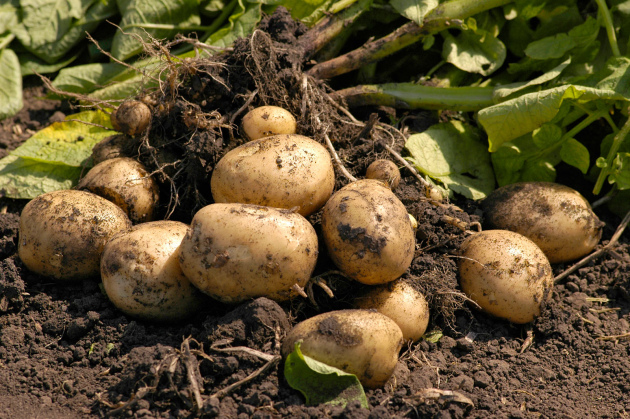
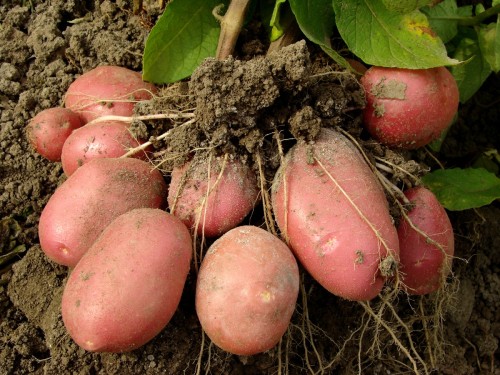
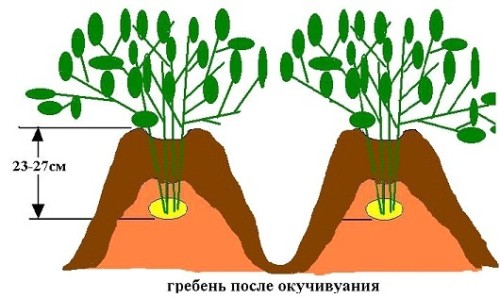
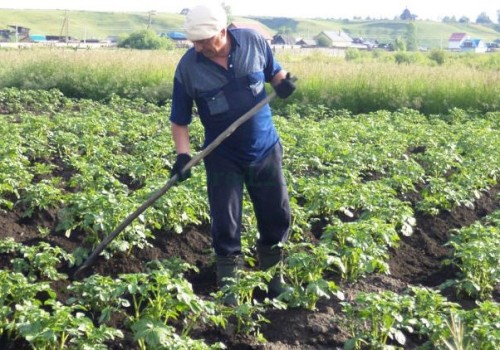

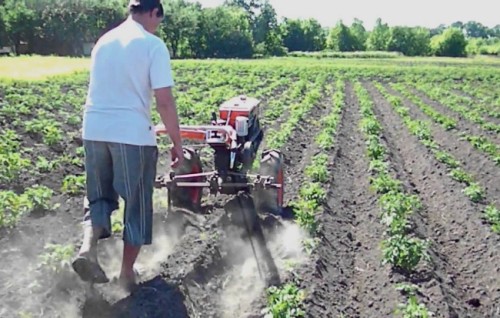
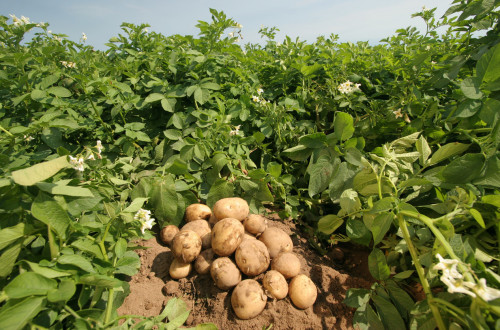
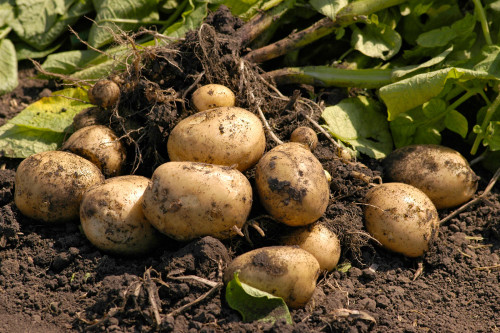












 Start a discussion ...
Start a discussion ...